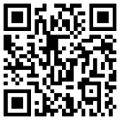Digital Flip Book Based E-Modules on Financial Literacy Materials
Abstract
Financial literacy is very much needed with the rise of financial products and financial service institutions that are currently available both online and offline. Consumers must have financial knowledge so that they can make good use of it, and not fall into financial problems easily. Financial literacy is focused on financial planning, banking, insurance and investment according to the circular of the Financial Services Authority (OJK) to the public. Students as human beings who are prepared to face a financially independent life, must also be equipped with financial literacy so that they can utilize financial products in their financial planning. Therefore, it is very important to compile modules for students who are currently inseparable from their smartphones and laptops. This e-module can be accessed anytime and anywhere with the gadget you have, both online and offline. The research method used is R & D from Sugiyono which consists of 10 stages. This study develops learning media in the form of e-modules for students and assesses the feasibility of media experts, material experts and students as users. The media expert's assessment resulted in 92.85, from material experts 95.31 and small group students 90.5 while the large group was 88.74 which all showed very valid categories. This shows that the e-module is acceptable and appropriate to be given to students for the Financial Management course on Financial Literacy.
Full Text:
PDFReferences
A. Hung, A. M. Parker, and J. Yoong, “Defining and measuring financial literacy.” RAND Working Paper Series WR-708, 2009.
D. L. Remund, “Financial literacy explicated: The case for a clearer definition in an increasingly complex economy,” J. Consum. Aff., vol. 44, no. 2, pp. 276–295, 2010.
A. Lusardi and O. S. Mitchell, “Baby boomer retirement security: The roles of planning, financial literacy, and housing wealth,” J. Monet. Econ., vol. 54, no. 1, pp. 205–224, 2007.
L. Klapper, A. Lusardi, and P. Van Oudheusden, “Financial literacy around the world,” World Bank. Washingt. DC World Bank, vol. 2, pp. 218–237, 2015.
OJK, “Literasi Keuangan.” 2021. [Online]. Available: https://www.ojk.go.id/en/kanal/edukasi-dan-perlindungan-konsumen/Pages/literasi-keuangan.aspx
N. Garg and S. Singh, “Financial literacy among youth,” Int. J. Soc. Econ., 2018.
L. Mandell, “The financial literacy of young American adults,” Jump. Coalit. Pers. Financ. Lit., pp. 163–183, 2008.
K. Kusumadyahdewi, “Pengetahuan Keuangan di Kalangan Mahasiswa,” J-PIPS (Jurnal Pendidik. Ilmu Pengetah. Sos., vol. 2, no. 2, pp. 118–134, 2016.
A. Rahman, I. Yousida, L. Kristansi, and S. Paujiah, “Pengaruh Pengetahuan Keuangan, Perencanaan Keuangan Dan Kontrol Diri Terhadap Perilaku Pengelolaan Keuangan Pada Mahasiswa Yang Menjalankan Praktik Bisnis Dikota Banjarmasin,” J. Mitra Manaj., vol. 4, no. 9, pp. 1405–1416, 2020.
S. Everlin and K. S. S. Dahlan, “Faktor-faktor yang memengaruhi sikap dan minat pembelian milenial terhadap asuransi jiwa,” J. Ris. Manaj. dan Bisnis Fak. Ekon. UNIAT, vol. 5, no. 2, pp. 41–60, 2020.
A. Pratma, “Minat Masyarakat Investasi Pasar Modal Masih Rendah, Kenapa Ya?” 2021. [Online]. Available: https://economy.okezone.com/read/2021/03/12/278/2376563/minat-masyarakat-investasi-pasar-modal-masih-rendah-kenapa-ya
S. W. Hati and W. S. Harefa, “Analisis Faktor-Faktor yang Mempengaruhi Minat Berinvestasi di Pasar Modal Bagi Generasi Milenial,” J. Appl. Bus. Adm., vol. 3, no. 2, pp. 281–295, 2019.
N. S. Putra and R. Rochmawati, “Pengembangan Bahan Ajar Mata Pelajaran Akuntansi Perbankan Dan Keuangan Mikro Berbasis Contextual Teaching and Learning (Ctl),” Edunomic J. Pendidik. Ekon., vol. 8, no. 2, pp. 61–71, 2020.
I. N. Wahyuny, “Pengembangan Modul Edukasi Literasi Keuangan Islam Dan Produk Halal Dengan ‘ADDIE,’” in Prosiding Seminar Pendidikan Ekonomi Dan Bisnis, 2017, vol. 3, no. 1.
N. Fajaryati, N. Nurkhamid, P. W. Pranoto, and M. Muslikhin, “E-Module development for the subject of measuring instruments and measurement in electronics engineering education,” J. Pendidik. Teknol. dan Kejuru., vol. 23, no. 2, pp. 191–199, 2016.
H. Nufus, S. Susilawati, and R. Linda, “Implementation of e-module stoiciometry based on kvisoft flipbook maker for increasing understanding study learning concepts of class X senior high school,” J. Educ. Sci., vol. 4, no. 2, pp. 261–272, 2020.
R. Seruni, S. Munawaroh, F. Kurniadewi, and M. Nurjayadi, “Implementation of e-module flip PDF professional to improve students’ critical thinking skills through problem based learning,” in Journal of Physics: Conference Series, 2020, vol. 1521, no. 4, p. 42085.
M. Arsal, “Pengembangan Media Pembelajaran E-Modul Materi Sistem Peredaran Darah Pada Kelas XI MIPA SMAN 6 BARRU.” Pascasarjana, 2019.
H. Elmunsyah, W. N. Hidayat, and K. Asfani, “Interactive learning media innovation: utilization of augmented reality and pop-up book to improve user’s learning autonomy,” in Journal of Physics: Conference Series, 2019, vol. 1193, no. 1, p. 12031.
P. K. Nashiroh, W. Kamdi, and H. Elmunsyah, “The effectiveness of web-programming module based on scientific approach to train logical thinking ability for students in vocational high school,” in In AIP Conference Proceedings, 2017, p. 020068. doi: 10.1063/1.5003551.
A. A. Cholid, H. Elmunsyah, and S. Patmanthara, “Pengembangan model web based learning pada mata pelajaran jaringan dasar paket keahlian tkj pada smkn se-kota malang,” J. Pendidik. Teor. Penelitian, dan Pengemb., vol. 1, no. 5, pp. 961–970, 2016, doi: https://doi.org/10.17977/jp.v1i5.6333.
Y. Li and J. Wang, “Evaluating the impact of information system quality on continuance intention toward cloud financial information system,” Front. Psychol., vol. 12, p. 713353, 2021, doi: https://doi.org/10.3389/fpsyg.2021.713353.
T. J. Wu and Y. N. Tai, “Effects of multimedia information technology integrated multi-sensory instruction on students’ learning motivation and outcome,” Eurasia J. Math. Sci. Technol. Educ., vol. 12, no. 4, pp. 1065–1074, 2016.
DOI: http://dx.doi.org/10.17977/um010v5i22022p55-61
Refbacks
- There are currently no refbacks.
 | Letters in Information Technology Education (LITE) |

1.png)
1.png)
1.png)
4.png)
1.png)
.png)

3.png)
1.png)
1.png)
